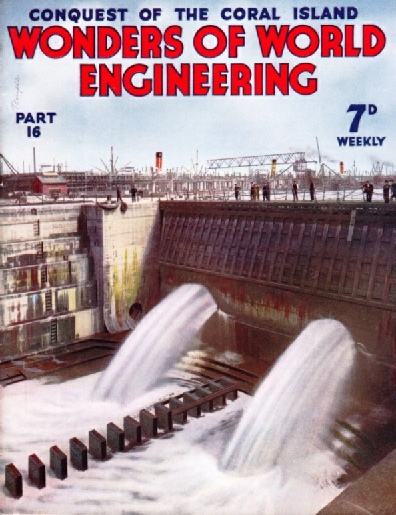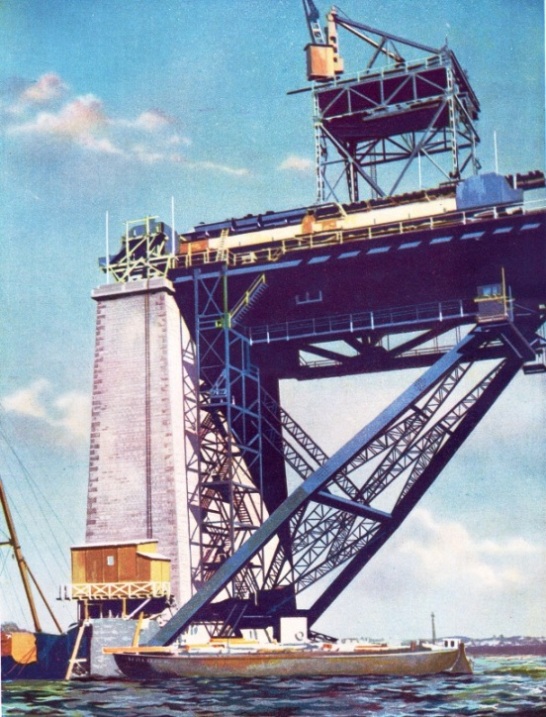

© Wonders of World Engineering 2014-




Part 16
Part 16 of Wonders of World Engineering was published on Tuesday 15th June 1937, price 7d.
Part 16 includes a colour plate showing the Little Belt Bridge. It formed part of the article on Great Danish Bridges.
The Cover
The cover of this week’s Part shows a graving dock being filled with water through sluices in the caisson which forms the gate. The dock is situated at the western end of King George V Dock, in the Port of London, and the graving dock is 750 long.

Contents of Part 16
Trans-Siberian Route (Part 2)
The story of how engineers at last succeeded in linking East and West with a steel highway across the largest stretch of unbroken land in the world. The article is concluded from part 15. It is the fifth article in the series on Railway Engineers at Work.
Manufacture of a Rotor Shaft
This chapter describes the stages in the construction of a turbine rotor shaft, that is, of the heavy shaft on which are mounted the blade-carrying disks. This is the ninth article in the series on Modern Engineering Practice.
Coral Island Engineering
Many of the coral islands in the Pacific and Indian Oceans contain valuable deposits of phosphate. This chapter tells how phosphates and other natural deposits are extracted and shipped from the Pacific island of Nauru, Ocean Island and Christmas Island. The greatest difficulty the engineers had to overcome was how to load the ships with the phosphates acquired from the islands.
Machinery of the Cotton Mill
The Lancashire cotton industry owes it existence mainly to the engineers who evolved the ingenious machines that carry out the complicated operations of spinning and weaving formerly done by hand. This chapter describes the cotton mills of to-day, and shows how that great industry was built up on the works and inventions of Arkwright, Hargreaves, and other early engineers. This is the third article in the series on the Romance of Industry.
The Little Belt Bridge (colour plate)
Great Danish Bridges (Part 1)
Road and rail communications in Denmark are interrupted by numerous straits and other waterways which have to be bridged or ferried. The Little Belt Bridge and the Storstrom Bridge are recent examples of the surmounting of difficulties in crossing arms of the sea. In this chapter the building of some of the largest bridges in Denmark are described. Denmark comprises a peninsula and numerous islands divided by sounds and other waterways, and bridges are vital links in the country’s communications. The chapter is concluded in part 17 and is the fifth article in the series Linking the World’s Highways.
